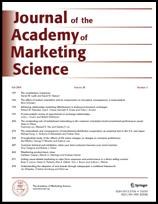
Orazi, \DavideC.\, Hamby, A., Herhausen, D., \van Laer\, T., Ludwig, S., Gonsalves, C. and Grewal, D. (2025). Verbal persuasion in marketing: A multimethod meta-analysis of analytical and narrative processing Journal of the Academy of Marketing Science, :.
-
Affiliated author
-
Publication year2025
-
JournalJournal of the Academy of Marketing Science
Customers process persuasive verbal messages through analytical or narrative routes. Extant marketing research offers limited findings regarding the relative effectiveness of different communication antecedents to these routes; neither does it sufficiently specify if and how communication modalities (written vs. audio) and product/service type (hedonic vs. utilitarian) moderate their impact. To address this gap, the current article presents the results of a multimethod investigation. With a meta-analysis, Study 1 establishes the differential effects of antecedents on analytical and narrative processing and the moderating roles of both modality and product/service type. Study 2 gathers the expectations of marketing professionals to provide a comparison with the meta-analytic findings, highlighting areas of misalignment and a relevant managerial question pertaining to the effects of blended analytical–narrative messages. Study 3 addresses this relevant question with an experimental approach. The combined results offer novel insights into verbal persuasion and suggest several directions for research.